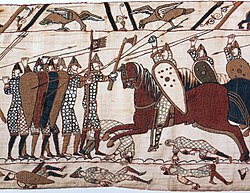
বৃহস্পতিবার, ১৭ জুলাই ২০২৫
প্রথম পাতা » রাজনীতি » Bangladesh’s Political Trajectory: Neighborhood Unrest, Military Rule, or Democratic Reinvention?
Bangladesh’s Political Trajectory: Neighborhood Unrest, Military Rule, or Democratic Reinvention?
Analytical Editorial Bangladesh’s Political Trajectory: Neighborhood Unrest, Military Rule, or Democratic Reinvention?
 By mid-2025, Bangladesh stands at a precarious political crossroads. Following Sheikh Hasina’s ousting, the military’s departure from barracks, the rise of Dr Muhammad Yunus as the head of an interim government, and deteriorating law and order, a new question looms over the nation:
By mid-2025, Bangladesh stands at a precarious political crossroads. Following Sheikh Hasina’s ousting, the military’s departure from barracks, the rise of Dr Muhammad Yunus as the head of an interim government, and deteriorating law and order, a new question looms over the nation:
Is Bangladesh heading toward widespread grassroots conflict? Is military rule becoming a plausible outcome? Or is a new democratic architecture on the horizon?
Neighborhood Unrest: A Fragile Social Order
Recent events-including the public assassination of a cable TV businessman, political mob attacks, and the resurgence of Dhaka’s underworld-suggest a breakdown of grassroots security. The police appear overwhelmed, and the army has stepped into administrative roles far beyond its traditional scope.
Observers warn: when law enforcement falters and governance weakens, everyday neighborhoods become battlegrounds.
Military Rule: Rumors or Real Risk?
Military high-level meetings, dissatisfaction with the interim government, and pressure on the presidency to declare emergency powers suggest growing tensions.
Although Yunus and his advisors deny any threat of martial law, the reality is more layered: the military remains not only a stabilizing force but increasingly an administrative authority.
Bangladesh’s constitutional balance risks distortion if this continues unchecked.
Democratic Reinvention: Improbable or Imminent?
Emerging student-led movements, the rise of parties beyond the binary establishment, and public appetite for reform indicate democratic momentum. But constitutional ambiguity, elite fragmentation, and lack of an electoral roadmap make this path difficult.
Still, for many citizens, a new beginning-grounded in participation, procedural fairness, and institutional integrity-is the only acceptable future.
Political Forecast: Where Are We Headed?
Trajectory Drivers Risks Likelihood
Neighborhood unrest Law enforcement failure, crime Civil strife, humanitarian crisis Moderate
Military rule Political vacuum, emergency logic Democratic paralysis, isolation Limited but real
Democratic reinvention Youth-led reform, international norms Elite resistance, constitutional delay High if roadmap emerges
Conclusion: Will Stability Emerge?
Bangladesh’s future hinges on three levers:
The interim government’s courage to announce a credible roadmap.
Political parties’ willingness to negotiate.
The people’s ability to mobilize sustained, principled pressure.
Only then can military restraint give way to democratic momentum-and the nation inch toward what many hope will be a long-overdue rebirth.




 ভূমি খেকো ভুয়া ডিগ্রীধারী সাদী-উজ-জামানের হাজার কোটি টাকার মিশন!
ভূমি খেকো ভুয়া ডিগ্রীধারী সাদী-উজ-জামানের হাজার কোটি টাকার মিশন!  দুর্নীতির বাদশা বিআইডব্লিউটিএর সহকারী প্রকৌশলী জালাল গংদের দুর্নীতি রুখবে কে?
দুর্নীতির বাদশা বিআইডব্লিউটিএর সহকারী প্রকৌশলী জালাল গংদের দুর্নীতি রুখবে কে?  সদ্য অবসরে যাওয়া মাধ্যমিক শিক্ষা কর্মকর্তা গোলাম মোস্তফার বিপুল সম্পদের মালিকানা নিয়ে রহস্য (পর্ব-২)
সদ্য অবসরে যাওয়া মাধ্যমিক শিক্ষা কর্মকর্তা গোলাম মোস্তফার বিপুল সম্পদের মালিকানা নিয়ে রহস্য (পর্ব-২)  হাসিনা ফ্যাসিস্ট নন, বরং প্রতিশ্রুতিতে ব্যর্থ গণতান্ত্রিক শাসক” — তসলিমা নাসরীন
হাসিনা ফ্যাসিস্ট নন, বরং প্রতিশ্রুতিতে ব্যর্থ গণতান্ত্রিক শাসক” — তসলিমা নাসরীন  আত্মস্বীকৃত দুর্নীতিবাজ তিতাস গ্যাস পিয়ন হেলাল কি আইনের ঊর্ধ্বে?
আত্মস্বীকৃত দুর্নীতিবাজ তিতাস গ্যাস পিয়ন হেলাল কি আইনের ঊর্ধ্বে?  বালাগঞ্জ-গহরপুরে রুকন ডেভেলপমেন্ট ফাউন্ডেশনের স্বপ্নের মেগা প্রকল্প
বালাগঞ্জ-গহরপুরে রুকন ডেভেলপমেন্ট ফাউন্ডেশনের স্বপ্নের মেগা প্রকল্প  রুকন ডেভেলপমেন্ট ফাউন্ডেশন ইউকের সংবাদ সম্মেলন অনুষ্ঠিত
রুকন ডেভেলপমেন্ট ফাউন্ডেশন ইউকের সংবাদ সম্মেলন অনুষ্ঠিত  বেতন-বোনাস’র টাকায় তিতাস গ্যাস পিয়ন হেলাল’র কয়েক কোটি টাকার সম্পদ
বেতন-বোনাস’র টাকায় তিতাস গ্যাস পিয়ন হেলাল’র কয়েক কোটি টাকার সম্পদ  “সাম্রাজ্যবাদের পুতুল নয়, প্রকৃত জনগণের সরকার চাই”-বামপন্থী নেতা মোশরেফা মিশু
“সাম্রাজ্যবাদের পুতুল নয়, প্রকৃত জনগণের সরকার চাই”-বামপন্থী নেতা মোশরেফা মিশু  ভূমি সেবা সত্যিকারার্থে জনগণের দোরগোড়ায় পৌঁছেছে: ভূমি সচিব
ভূমি সেবা সত্যিকারার্থে জনগণের দোরগোড়ায় পৌঁছেছে: ভূমি সচিব